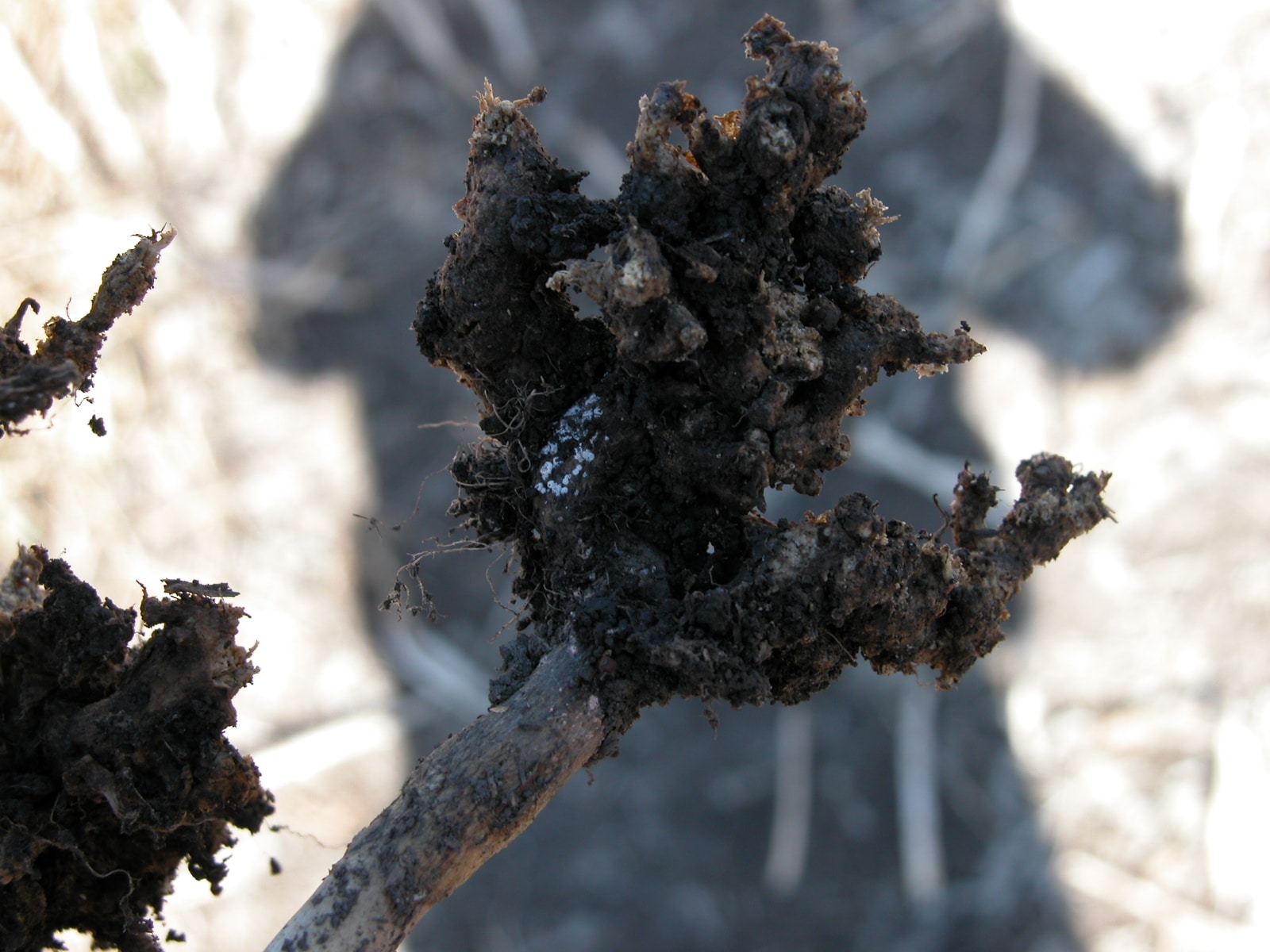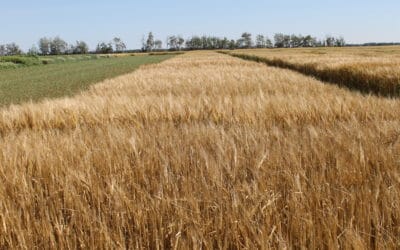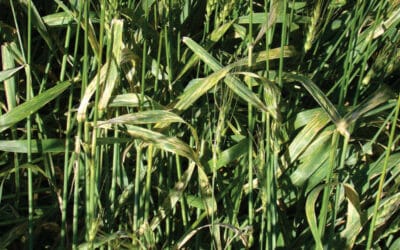Clubroot, shown here as firm, white, young galls, continues to spread in Alberta and should be scouted for in 2021. Photo: Stephen Strelkov, University of Alberta
Your province wide crop disease outlook for the 2021 growing season.
Though every farmer wishes it otherwise, crop diseases are a constant in farming. Exactly what diseases should Albertan farmers expect in 2021? While certain trends are clear, much will depend on what Mother Nature chooses to throw at farmers in the lead-up to and throughout next year’s growing season.
“Most plant diseases are very difficult to predict because they are highly weather dependent,” says Agriculture and Agri-Food Canada (AAFC) Plant Pathology Research Scientist Kelly Turkington. “Average growing season temperature and precipitation may or may not be indicative of risk because it can be the shorter-term weather events, if they coincide with specific growth stages, that allow disease to take off.”
For example, moisture in June and into July can translate to cereal leaf spot diseases, even if much of the rest of the season is drier.
Barley suffered significant scald in 2020, mostly related to the relatively cool condition in the earlier growing season. If next year is warm early in the year instead, it’s more likely net blotch or spot blotch will take hold.
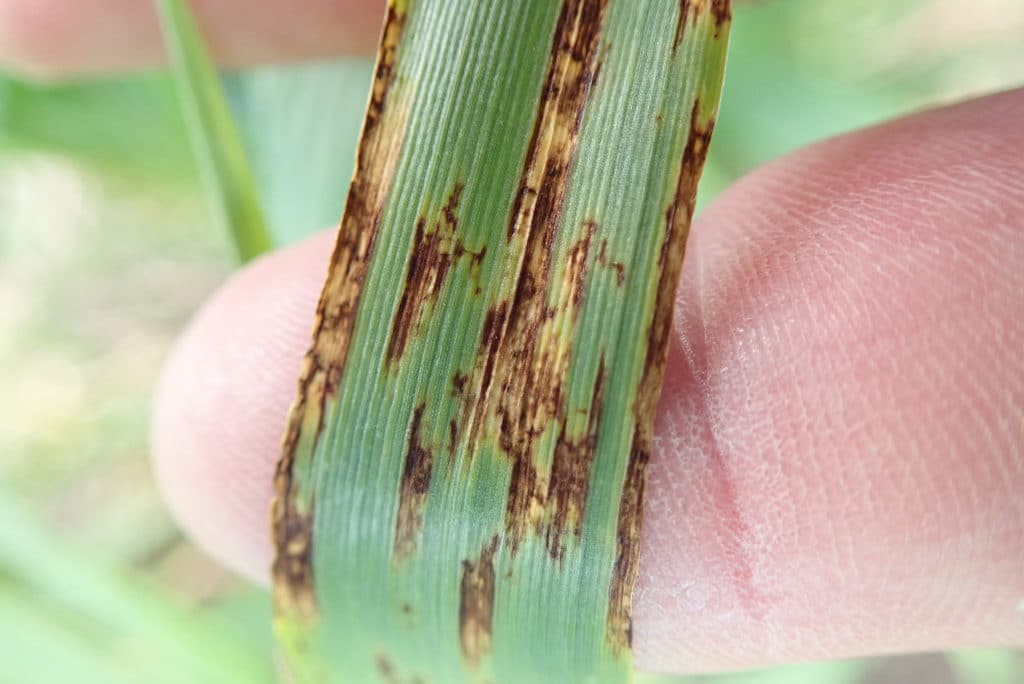
Rusts are highly dependent on both localized weather and conditions from where the inoculum blows in.
“For rusts, keep an ear to the ground,” says Turkington. “Stripe rust is the main rust disease affecting Alberta wheat crops, and if epidemics of stripe rust are being reported in the U.S. Pacific Northwest (PNW) in early spring, this would serve as an indication of risk for Alberta wheat producers.”
However, he adds, mild winters with adequate snow cover can permit the stripe rust pathogen to overwinter on Alberta winter wheat crops, so monitor your winter wheat in the fall and as soon as it starts to regrow in the spring.
Proper identification is critical on all disease fronts. In 2020, there was a low to moderate outbreak of bacterial leaf streak in wheat across the Prairies. Farmers who assumed the problem was fungal were frustrated when their fungicide application(s) made no difference.
“Traditionally, (bacterial leaf streak) is more of a curiosity than an actual production impact,” says Mike Harding, provincial plant pathologist with Alberta Agriculture and Forestry (AAF) in Brooks, Alta. “In 2020, there were more issues to the point that some fields in Saskatchewan, Manitoba and certainly here in Alberta were probably experiencing low to moderate levels of yield loss.”
Turkington expects low incidence of root rots, except in fields which are being planted barley-on-barley or wheat-on-wheat, although take-all can be elevated for wheat planted into barley residue.
Fusarium levels skyrocketed in 2016, steadied in 2017 and 2018, and then climbed again in 2019. Fusarium scouting and management should be a top priority for all farmers in 2021.
“Be cognisant and vigilant. You should be testing, especially if you haven’t had issues with FHB caused by Fusarium graminearum before,” explains Turkington. “If you’ve had downgrading due to FHB, have testing done to find out what species of Fusarium is causing the issue, as it’s sometimes due to species other than Fusarium graminearum and the impact can be lower. In addition, Septoria glume blotch can mimic symptoms of fusarium.”
Both clubroot and blackleg continued spreading in 2020 and should be scouted for in 2021.
“Clubroot was initially in the Edmonton/St. Albert region, then the broader Edmonton region, now it’s continued its ugly march outside of those areas,” says Turkington.
Stephen Strelkov and colleagues at the University of Alberta are just finishing up their analyses of clubroot survey results. Their survey, along with monitoring by Harding and agricultural field persons across the province, resulted in the identification of 379 confirmed clubroot infestations in 2020. Strelkov says in 2020, Alberta saw its first confirmed clubroot cases in the MD of Smoky River (Peace region) and in the Grande Prairie (Peace region) and Wheatland (east of Calgary) counties.
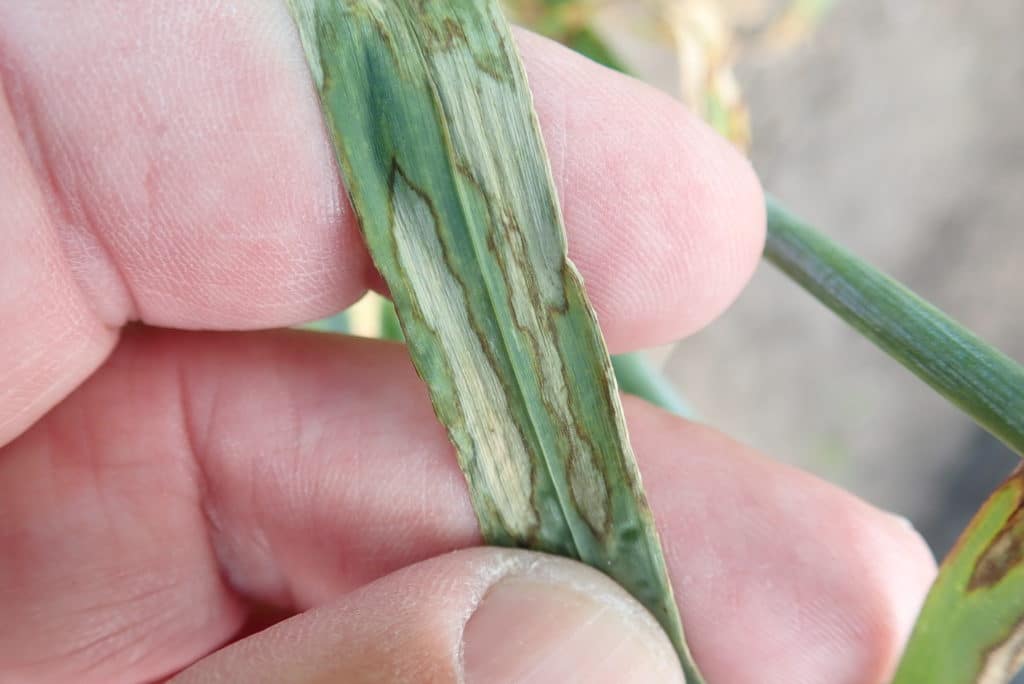
Blackleg is widely spread and continues to shift in virulence.
“Blackleg is a ubiquitous thing. Whether it’s an issue that starts to harm yield depends on the specific race of the pathogen. Over the last few years, we’ve seen disease development in canola fields at levels much higher than we’ve seen in the past,” says Turkington.
Combatting both blackleg and clubroot will required continued vigilance, the use of resistant varieties and widening the rotation interval between canola crops where possible.
Sclerotinia will be highly dependent on moisture levels next June and July. Fields which suffered high infection in recent years will harbour large numbers of sclerotia, increasing risk next year and beyond in all adjacent fields.
In pulses, Mycosphaerella (ascochyta) blight will be back in 2021, says Robyne Bowness Davidson, a pulse research scientist with AAF. Though its virulence will depend on weather conditions, it can be managed with proper scouting and timely fungicide application.
Aphanomyces will be top of mind for field peas and lentils in 2021 but, again, will be dependent on rain.
Management is based on doing everything right, Bowness Davidson says.
“I’ve seen it come in from pure bad luck, and it can go through an entire field. But usually, it gets a hold in a field that’s struggling anyway.”
Unfortunately, Aphanomyces is a very long-lived pathogen, she adds.
“Just because you don’t see it doesn’t mean it’s not there. If you have a very good rotation, it’ll be less of an issue. But if you don’t have a good rotation, it can be devastating.”
If 2021 turns out wet, expect downy mildew in field peas. That said, downy mildew will produce damage extremely rarely in an otherwise healthy crop. Chocolate spot in fababeans is another common disease, but it is rarely an economic issue.
Tackling Fusarium Graminearum
In June of 2020, Fusarium graminearum was declared endemic to Alberta and was removed from Alberta’s Pest and Nuisance Control regulations. This change allows government, industry and producers to work more openly and effectively towards managing the disease’s impact.
“We moved from a prophylactic, prevention, eradication stance into a management stance,” says Alberta Seed Processor’s (ASP) general manager, Monica Klaas. “It’s not good that it’s so widespread, but the change allows us to more directly tackle it.”
In response to the regulation changes, Alberta’s Fusarium Action Committee (FAC) is being entirely reworked to be more farmer focused. The FAC provides a forum to represent the interests and views of Alberta’s agriculture industry regarding the management of Fusarium graminearum.
The FAC will tackle new tasks such as updating the Alberta Fusarium graminearum Management Plan to reflect the change in regulation and identifying future needs, says Alberta Agriculture and Forestry’s chief provincial plant health officer, Krista Zuzak, FAC’s co-chair.
“Fusarium graminearum is still an important pest to manage in farming operations, so work will continue on best management practices and sharing the latest research in fusarium management. Topics will include varieties, seed cleaning, the importance of clean seed, seed testing, and discussion on new science-based information, as it becomes available.”
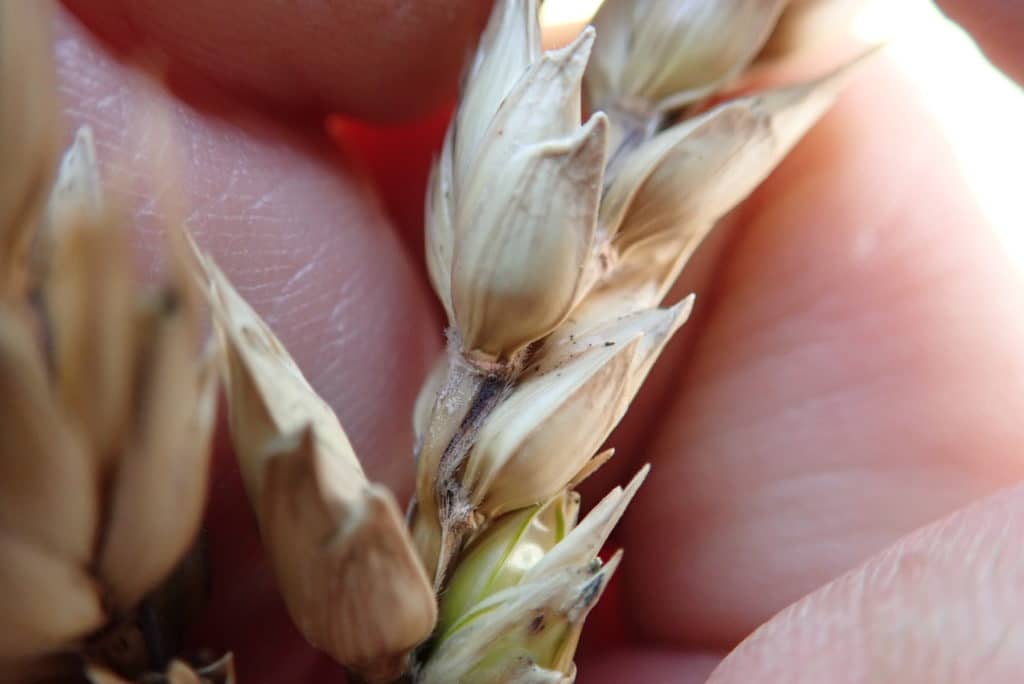
“FAC 2.0 is a positive thing,” explains Klaas. “It’s positive that as an industry, we’re looking at developing and beefing up our existing management plan.”
Meanwhile, ASP recently received funding to run a new fusarium seed surveillance system, which will collate and publish fusarium results from SGS Biovision, Seed Check Technologies, and 20/20 Seed Labs.
“Seed testing has always been a cornerstone of fusarium management here in Alberta,” says Klaas. “The change in regulation has not changed anything. It’s still vitally important that farmers test their seed. What this project does is take the data from all three accredited labs in Alberta, puts it into a single database, and then maps it all to help industry, farmers, grain buyers, agronomists, everyone, get an idea of what levels are doing.”
Klaas says her team will use the results to publish pre-season interim reports in January of 2021, 2022 and 2023, as well as post-planting final reports each year. The results will be entirely anonymous, linked only broadly to counties or municipalities. However, even generalized results will help inform producers’ decision making around fusarium management.
“The big benefit to farmers is that they get to see a snapshot of what fusarium levels are doing in their area. If you’re in an area that is showing very, very high samples, it would mean you really need to pull out all stops and employ all the best management practices,” says Klaas.
The success of the program hinges on farmers getting their seed tested. ASP encourages farmers to obtain a minimum of a fusarium disease test on all cereal seed.
The seed surveillance project is funded through the Canadian Agricultural Partnership until early 2023. However, Klaas hopes it will become permanent.


